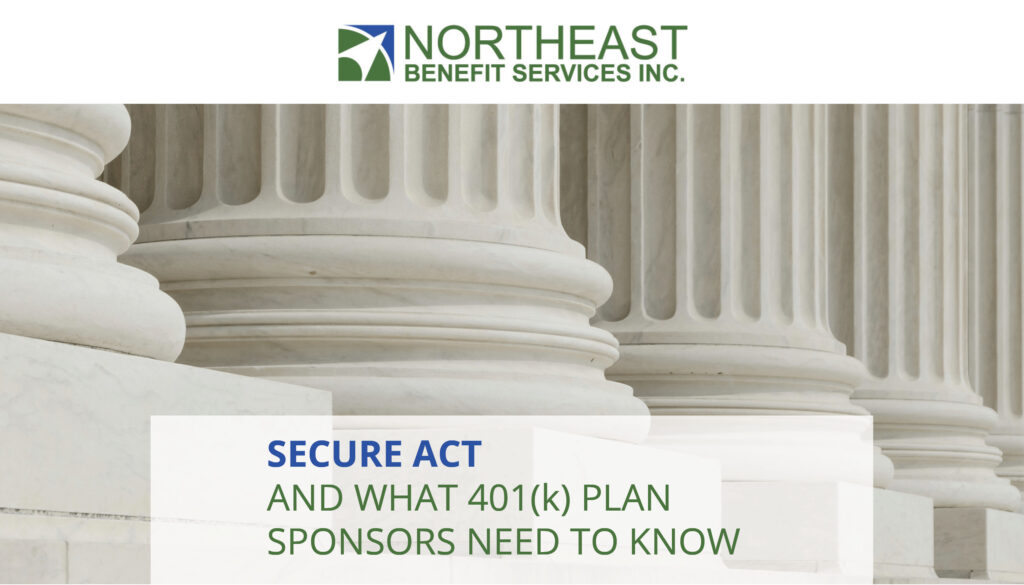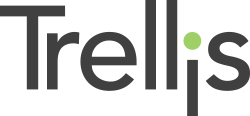
On 23 December, one of the largest changing legislative acts to impact America’s retirement system was signed into effect. The Setting Every Community Up for Retirement Enhancement Act – or SECURE Act – has many updates and modifications that seek to enhance retirement security activities. The Act strives to address challenges that small business owners face including helping your employees better understand their workplace savings plans, encouraging employees to save more for their future, and offsetting plan costs.
For plan administrators, sponsors and fiduciaries, here are a few of the biggest changes that you should be aware of:
- Helping employees better understand their account balances: When participants see their total account value, it can be challenging to understand how that will translate into retirement income. That is why, coming soon and the reason why there will be new lifetime income disclosure statements. The statement will illustrate monthly payments based on the current account balance to demonstrate a monthly income stream. This helps your employees to see how far (or short) their retirement account balance would stretch if that was their sole source of monthly income. Based on this information, it could be a great motivator to help your employees save more towards achieving a capable retirement income.
- Ability to increase savings through automatic enrollment: Today, plan sponsors can auto-enroll employees at 10% of salary to save towards their retirement. Under the SECURE Act, the Safe Harbor deferral cap is increased to 15% of salary. This auto-enrollment nudge could help your employees get on track and improve their retirement outcomes.
- Encouraging conversations about lifetime income options: The Act protects plan fiduciaries that act prudently when selecting insurers for guaranteed retirement income contracts and protecting them from liability, thus allowing for portable workplace retirement annuities.
- Supporting growing families: Allowing participants to withdraw up to $5,000 from 401(k) plans without penalty to help with the costs related to a child’s birth or adoption.
- Ability to access retirement assets in the event of a disaster: In the unfortunate event that disaster strikes, there are new provisions that allow either a distribution or loan up to $100,000 for recovery.
- Increases to the Required Minimum Withdrawals (RMD) age: Changing the required distribution age from 70 ½ to 72 years old.
- Credits for new retirement plans: If your firm setup their retirement plan within the last three years, you may be eligible for tax credits up to $5,000 to apply towards startup costs. Additional credits are available to employers that convert an existing plan to an automatic enrollment design.
- Easier to update to Non-Elective Safe Harbor. The Act allows plan sponsors to switch to a Safe Harbor 401(k) plan with Non-Elective contributions at any time before the 30th day before the close of the plan year. Also, the notice requirement for Non-Elective Safe Harbor is eliminated.
The SECURE Act has many changes that could directly impact your company’s retirement plan. The information above is a brief high-level overview that might affect your plan, it is definitely not exhaustive and you should do careful review to learn how the SECURE Act will impact your company’s retirement plan. For more information, please visit NAPA-Net’s SECURE Act resource page, which is updated continuously with new information.
Additionally, contact us, we are available to sit down for a conversation to discuss your specific plan needs.
Lawrence M. Kavanaugh, Jr. AIF, CRPA, CLU, ChFC
Northeast Benefit Services, Inc.
950-A Union Road, Suite 31
West Seneca, NY 14224
info@nebstpa.com
Phone: (716) 674-7200 x237
1200 Jefferson Road, Suite 302
Rochester NY 14623
info@nebstpa.com
Phone: (585) 214-0030 x237
